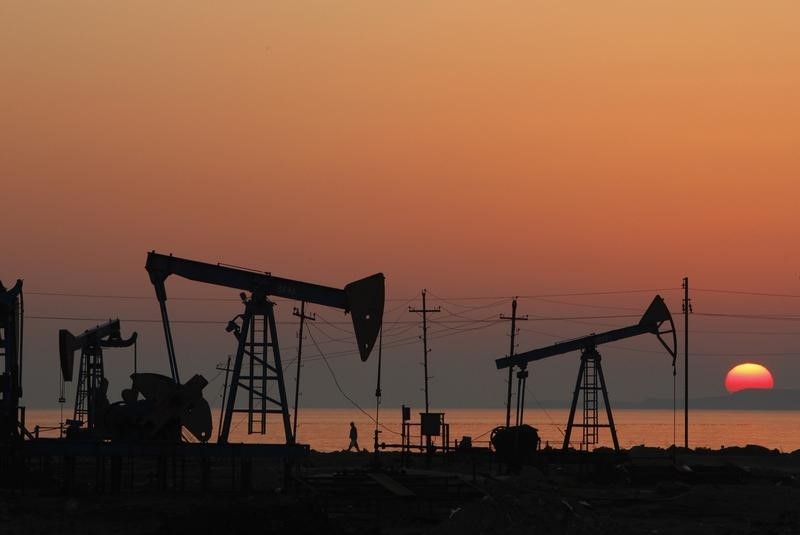Investing.com - Crude oil prices settled modestly higher amid expectations that the Energy Information Administration’s weekly inventory totals will show US crude stockpiles rose for the second straight week.
On the New York Mercantile Exchange crude futures for April delivery rose 3 cents to settle at $62.60 a barrel, while on London's Intercontinental Exchange, Brent gained 27 cents to trade at $65.82 a barrel. WTI Crude futures traded hit a session high of $63.27 a barrel before paring gains.
With refiners undergoing seasonal maintenance, refinery activity is expected to have slowed, lowering demand for crude while raising the prospect of a build in supplies. Investors expect the Energy Information Administration (EIA) on Wednesday to report US crude inventories rose by about 2.7 million barrels last week.
Also adding to negative sentiment was expectations that US production would continue to increase after the EIA in its previous report said domestic crude production to rose 10.3 million barrels per day. A level that keeps the US's standing as the world’s second largest oil producer behind Russia, and supports International Energy Agency’s claim Monday that US shale production is set to soar for the next five years.
“The United States is set to put its stamp on global oil markets for the next five years,” said Fatih Birol, the IEA’s executive director, in a statement. He added that the IEA could revive its estimate for US output upward should oil prices remain above $60.
Rising US production has been one major concerns threatening to derail major oil producers’ efforts to rebalance oil markets and reduce oil inventories in the OECD countries to the five-year average.
Fears over growing domestic crude stockpiles comes a day after crude prices rose sharply on reports that crude stockpiles declined at the cushing storage hub in Oklahoma.
Inventories at the key U.S. hub – already at the lowest since 2014 – are expected to continue as producers opt to sell rather than store crude as current prices continue to trade at a premium to forward prices – a market structure known as backwardation. The added inventive to sell rather than store crude could help offset the expected build in crude inventories.
